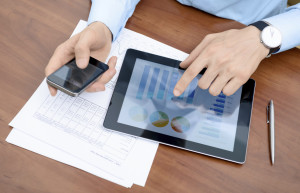All news » VAT – Flate-rate scheme changes Apr 2017
VAT – Flate-rate scheme changes Apr 2017
At Autumn Statement on 23 November 2016, the Chancellor of the Exchequer announced the introduction of a new 16.5% VAT flat rate for businesses with limited costs. This will take effect from 1 April 2017.
VAT – Flate-rate scheme changes
The VAT Flat Rate Scheme (FRS) is a simplified accounting scheme for small businesses. Instead of calculating vat on sales and vat on purchases and then determining the vat liability to pay HMRC, under a flat-rate scheme, the scheme registered business can use a pre-determined percentage on its gross Sales to calculate the liability.
New changes:
Currently businesses determine which flat rate percentage to use by reference to their trade sector. From 1 April 2017, FRS businesses must also determine whether they meet the definition of a limited cost trader, which will be included in new legislation.
After this change the FRS will become less attractive to some businesses and they may decide to no longer operate under the FRS. In some cases where a business has voluntarily registered for VAT it will be advisable to deregister from VAT.
According to HMRC:
What is a limited cost trader?
A limited cost trader will be defined as one whose VAT inclusive expenditure on goods is either:
- less than 2% of their VAT inclusive turnover in a prescribed accounting period
- greater than 2% of their VAT inclusive turnover but less than £1000 per annum if the prescribed accounting period is one year (if it is not one year, the figure is the relevant proportion of £1000)
Goods, for the purposes of this measure, must be used exclusively for the purpose of the business but exclude the following items:
- capital expenditure
- food or drink for consumption by the flat rate business or its employees
- vehicles, vehicle parts and fuel (except where the business is one that carries out transport services – for example a taxi business – and uses its own or a leased vehicle to carry out those services)
These exclusions are part of the test to prevent traders buying either low value everyday items or one off purchases in order to inflate their costs beyond 2%.
Examples
Goods must be used exclusively for the purpose of the business – this means that you must not include the cost of any goods that are used in full or in part for your own private use. For example, printer ink and stationery that are used for both your office and your home would not be included. It would also exclude goods acquired with the intention of giving them away or donating them to a third party.
Capital expenditure – is the cost of any goods which are bought to be used in the business over a period of time (for example, longer than a year). Examples include equipment such as a computer, mobile phone, office furniture, a tablet or a printer, even if they are not necessarily treated as capital assets for accounting purposes. The legislation that describes capital expenditure goods can be found in VAT Regulations 1995, 55A (1).
Internet link: GOV.UK VAT notice 733
Get in touch to find out how we can help you
Tagged in: VAT Accounting Mistakes accounting services Small Businesses startup year-end accounts

